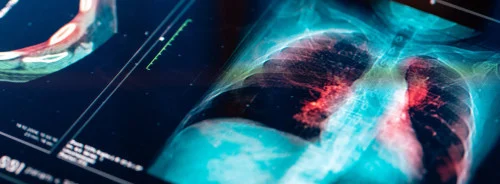Coronary artery disease (CAD) remains the leading cause of morbidity and mortality worldwide, emphasising the importance of precise diagnostic tools. Computed Tomography (CT) myocardial perfusion imaging has gained prominence as a non-invasive method for assessing myocardial ischaemia, particularly when used in conjunction with coronary CT angiography (CTA). However, current CT perfusion techniques often require multiple scans, leading to high radiation exposure and potential image artefacts due to cardiac motion. This article explores a novel single-volume dynamic CT myocardial blood flow measurement technique validated in a swine model, highlighting its reproducibility and potential to revolutionise cardiac imaging.
The Evolution of CT Myocardial Perfusion Imaging
Dynamic CT myocardial perfusion imaging has been instrumental in assessing myocardial blood flow and ischemia. Traditional methods rely on multiple scans to capture perfusion data, which, while effective, result in significant radiation exposure—up to 10-15 mSv per exam. Moreover, the necessity for multiple scans increases the likelihood of motion artefacts, complicating image analysis. Recent advancements have introduced techniques that reduce radiation doses; however, they still depend on multiple image volumes, maintaining the risk of artefacts and high radiation exposure. The single-volume CT technique presents a promising alternative by requiring only a single scan, significantly lowering the radiation dose and eliminating motion artefacts, making it a safer and more accurate option for patients.
Methodology and Validation in a Swine Model
To validate the reproducibility of the single-volume CT myocardial perfusion technique, the study utilised 13 swine subjects, chosen for their anatomical and physiological similarities to humans in cardiac studies. The animals underwent both rest and stress perfusion measurements using the single-volume technique. The process involved injecting a contrast agent and acquiring a single volume scan at the peak of aortic enhancement, followed by bolus tracking. This method allowed for the assessment of myocardial perfusion across different coronary artery territories, including the left anterior descending (LAD), left circumflex (LCx), and right coronary artery (RCA). The reproducibility of the measurements was evaluated using regression analysis, with the results demonstrating high correlation and minimal error, confirming the technique's reliability.
Advantages of Single-Volume CT Myocardial Perfusion
The single-volume CT technique offers several advantages over traditional dynamic CT perfusion methods. Firstly, it significantly reduces the radiation dose to patients, with the average dose reported at 2.3 mSv, compared to the 10-15 mSv required for multiple scans. Secondly, the technique eliminates motion artefacts, capturing the necessary data in a single breath-hold, unlike conventional methods requiring multiple scans over several cardiac cycles. This improvement enhances image quality and diagnostic accuracy. Additionally, the single-volume technique enables simultaneous acquisition of perfusion and coronary angiography data, providing both anatomical and physiological insights in one scan, making it a comprehensive tool for diagnosing coronary artery disease.
Conclusion
The validation of the single-volume dynamic CT myocardial perfusion technique in a swine model demonstrates its potential as a reliable, low-dose, and artefact-free imaging method for assessing myocardial ischemia. By reducing radiation exposure and eliminating motion artefacts, this technique enhances the safety and accuracy of cardiac imaging. As the medical field continues to seek advancements in non-invasive diagnostic tools, the single-volume CT myocardial perfusion technique stands out as a promising innovation that could significantly impact the management and diagnosis of coronary artery disease in clinical settings. Further studies in human subjects will be crucial to confirm these findings and facilitate the broader adoption of this technique in clinical practice.
Source: European Radiology Experimental
Image Credit: iStock






